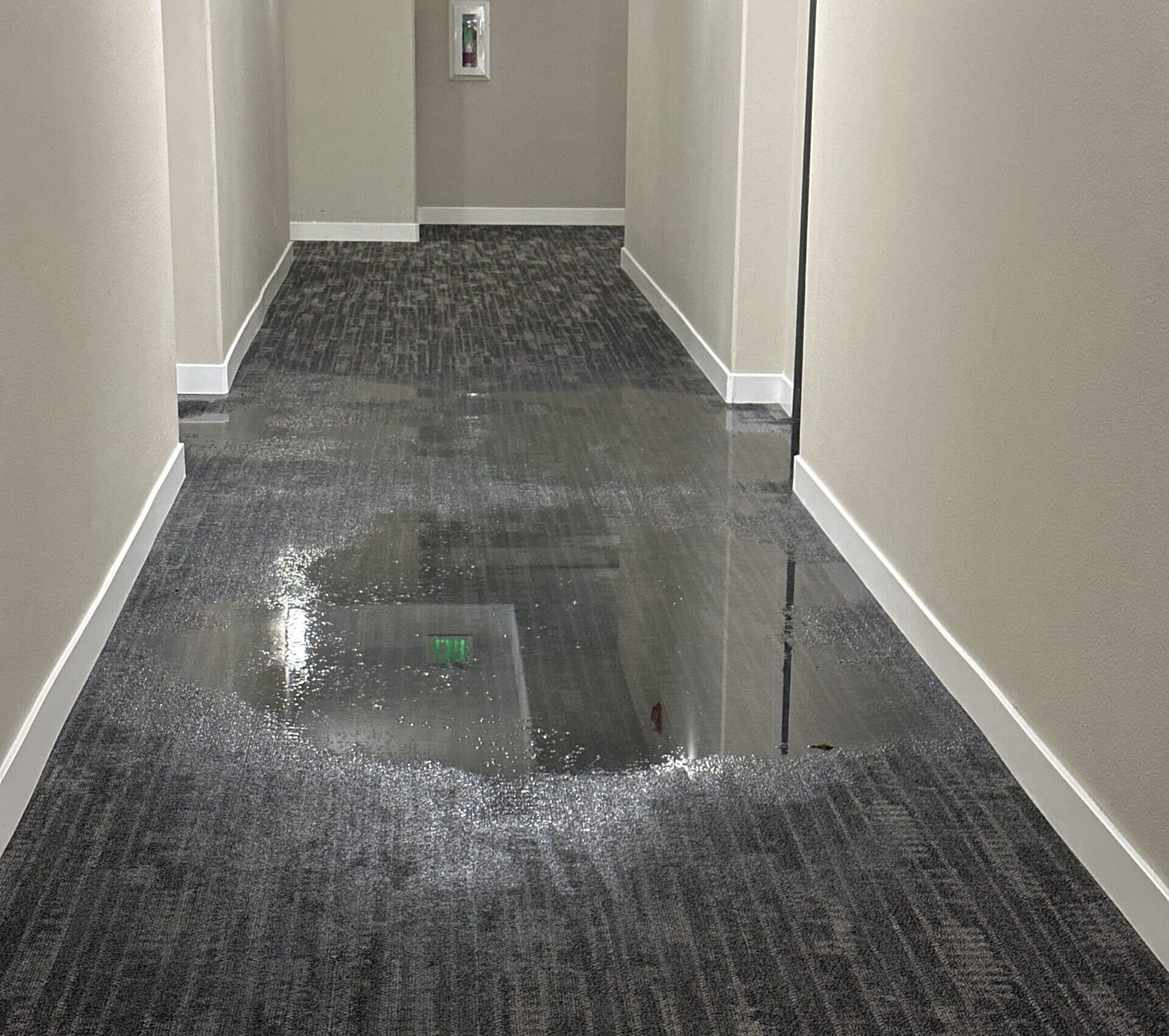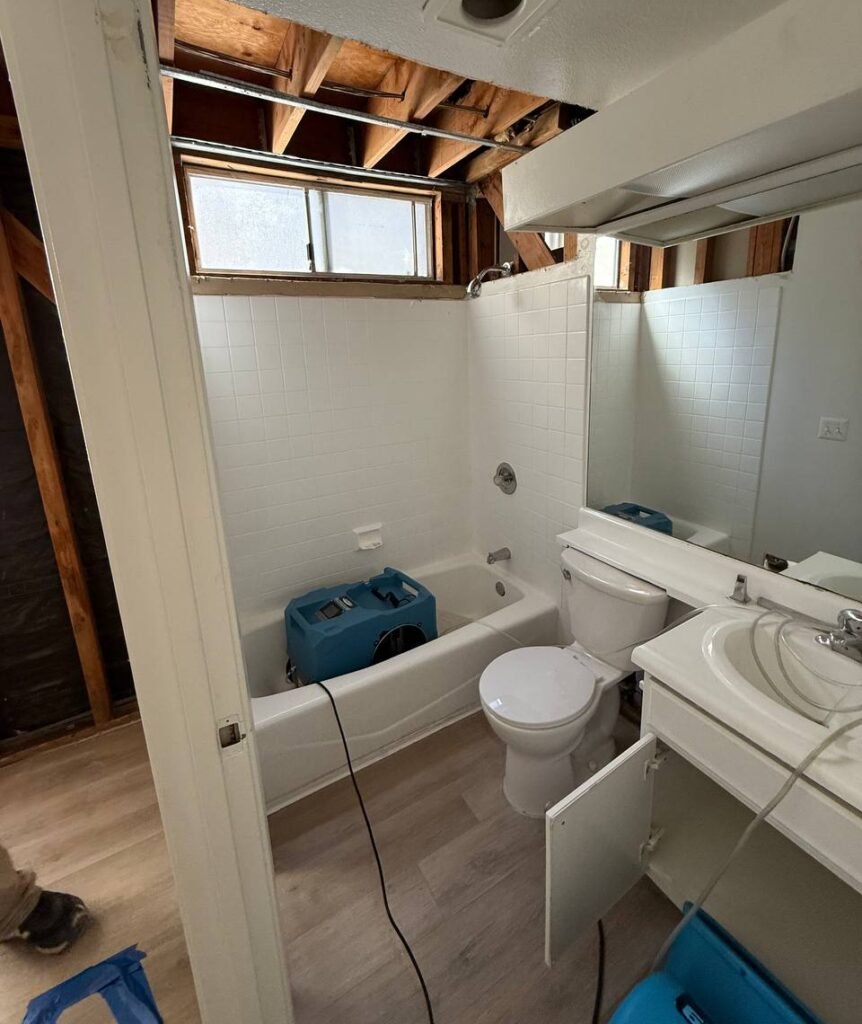Water Damage Restoration in Tarzana, CA | 24/7 Cleanup & Drying
South of the 101, Tarzana climbs toward Mulholland with winding streets, view decks, and landscaped slopes above Braemar and El Caballero. North of Ventura, ranch homes and apartments line the Safari Walk and Reseda Blvd corridor. When water gets loose here, it rarely pools in one room. Hillside grades carry it down stairs and through chases; irrigation and pool pads load moisture against stucco; flat roof sections along Ventura track stormwater sideways before it prints as a ceiling stain. We work these blocks daily, from Tampa to Lindley and up to the ridgeline. Our crews arrive 24/7, stabilize the loss, protect finishes, and follow an instrument-driven plan that keeps demolition precise and insurance decisions fast.
Get Started
Service Form
How water losses start in Tarzana homes and buildings
Hillside runoff and deck details
Balconies over living space, stucco parapets, and scuppers are common above Braemar Country Club. When drains clog or seams open, water rides joist bays and appears rooms away on the level below.
Irrigation and planters against stucco
Lush landscaping on south-facing slopes wets lower plates and toe-kicks. Micro-cracks at base flashing let moisture wick into wall cavities where odor lingers.
Pool/spa equipment pads
Pad leaks and backwash lines flood garages and first-floor offices. Tight closets trap humidity around water heaters and softeners.
Aging supply lines and slab leaks
Original copper or galvanized supplies and angle stops along Yolanda, Wilbur, and Lindley develop pinholes. Under-slab leaks show as warm spots, buckled flooring, or persistent odor without obvious standing water.
Flat roofs along Ventura Blvd
Parapet cracks, ponding at scuppers, and aging penetrations feed long, slow intrusions into insulation and ceiling drywall in mixed-use buildings.
HVAC condensate and attic wetting
Clogged condensate lines soak framing near air handlers. Hot attics accelerate odor if wet insulation isn’t removed and cavities aren’t dried to target.
Window/stucco intrusions in valley winds
Wind-driven rain can bypass paper at older assemblies. Staining shows later along baseboards or built-ins.

First hour on site: what we do and why
Safety and source control – Shut-offs and electrical checks prevent secondary damage.
Moisture mapping – Pin/pinless meters plus thermal imaging define the “wet envelope,” including cavities, subfloors, and ceiling bays.
Scope you can see – We explain what dries in place, where relief openings go, and what must be removed. No blanket tear-outs.
Bulk water removal – Truck-mount or portable extraction lowers the humidity load so dehumidification can work efficiently.
Mitigation workflow that limits demolition
Containment and HVAC isolation
We build clean containments with zipper access, seal supplies/returns in the work zone, and protect stairs and corridors. For apartments and offices on Ventura, we pad elevators and schedule quiet-hour windows.
Targeted access
Baseboards or toe-kicks come off only where readings demand. We create small, strategic openings to ventilate wall or ceiling cavities rather than opening everything “just in case.”
Drying to instrument targets
Dehumidifiers and air movers establish a closed system. We add wall-cavity drying, floor tents, or mat systems for hardwoods and inlays. Baseline, daily, and final readings are logged and shared.
Cleaning and antimicrobial where appropriate
Salvageable non-porous and semi-porous surfaces are cleaned. We use targeted antimicrobial to support cleaning, never as a substitute for source control and dry-down.
Documentation your insurer accepts
Photos, moisture maps, equipment logs, and a line-item Xactimate estimate connect cause → extent → actions. That clarity shortens adjuster back-and-forth.

Why Tarzana homeowners and managers choose Onsite Pro
Neighborhood fluency. Daily work from the Ventura corridor to the Mulholland ridgeline. We plan around parking, slopes, and quiet-hour rules without slowing the job.
Measured decisions. Moisture targets and IICRC S500 guide every step. No premature closures that leave odor or invite mold.
Finish protection. We shield hardwoods, stone, plaster, stair trim, and built-ins with the right airflow and coverings.
Carrier-ready files. Photos, moisture maps, equipment logs, and Xactimate line items shorten approvals.
Respect for occupied spaces. Clean containments, tidy runs, and clear daily updates.
Call (818) 336-1800 now for rapid dispatch or a free local estimate.
Insurance, without the delays
Cause is documented with meter photos and thermals.
Scope is proportional and tied to readings.
Format is familiar to adjusters (Xactimate line items, moisture/equipment logs, daily photos).
Most policies address sudden and accidental releases such as burst lines, appliance failures, storm intrusions, and some slab leaks. Long-term seepage or maintenance issues can be limited. Our files show stabilization speed, affected boundaries, and proof that assemblies reached target moisture.
Investment signals (not a quote)
Every loss is different, but local ranges help planning:
Extraction: $0.30–$0.80 per sq ft depending on volume and flooring.
Containment & protection: $150–$650 per chamber based on complexity.
Daily equipment: air mover $25–$45; LGR dehumidifier $80–$130; HEPA negative air $95–$170.
Selective drywall removal/haul-off: $2.75–$5.75 per sq ft.
Wet insulation removal: $1.50–$3.75 per sq ft.
Baseboard/toe-kick remove & replace: $6–$12 per linear ft.
Moisture monitoring and photo logs are included within daily service lines. We explain what is required, what is optional, and why.
Timeline you can plan around
Same-day stabilization and extraction.
Drying window: typically 3–5 days for most assemblies; plaster and mortar beds trend longer.
Documentation cadence: daily readings and photos shared with you and, if requested, your adjuster or property manager.
Repairs: after targets are met. Common scopes include drywall/texture, insulation, paint, flooring repair or replacement, and trim.
What to do before we arrive
Shut off the main valve if safe. Avoid powering wet circuits or ceiling fixtures. Lift furniture onto blocks or foil. Do not puncture bulging ceilings—saturated drywall can fail. In pre-1978 areas, avoid disturbing painted materials until lead/asbestos rules are addressed. In condos or offices along Ventura, alert management so we can reserve access and elevator pads.
Prevention checklist for Tarzana properties
Decks and roofs: clear scuppers and drains before storms; inspect parapets, penetrations, and membranes each season.
Pressure & supplies: verify a pressure regulator; replace aging angle stops and braided lines for sinks, toilets, washers, and fridges.
Irrigation & grading: pull sprinklers back from stucco; keep soil and planters below weep screed; maintain positive slope away from structures.
Pools/spas: check pad plumbing, backwash routes, and autofill valves; add leak alarms near equipment closets.
Ventilation: duct baths and laundry to exterior; use humidity-sensing controls; add make-up air in tight rooms.
Indoor RH: target ~40–50%; use dehumidifiers during wet weeks.
Verification after any leak: confirm target moisture in framing, subfloor, and cavities before closing or refinishing.
Service area
Tarzana hills to Mulholland • Braemar and El Caballero areas • Ventura Blvd Safari Walk • Reseda/Tampa corridors • Adjacent Encino, Woodland Hills, and Reseda.
Explore More Restoration Services in Tarzana
Internal Links
Tarzana Sewer Damage Cleanup
Safe sewer and biohazard cleanup.
Tarzana Fire Damage Restoration
Complete fire and smoke restoration.
Tarzana Mold Remediation
Certified mold removal with free inspections
Tarzana Hub Page
Explore all restoration services in Tarzana
